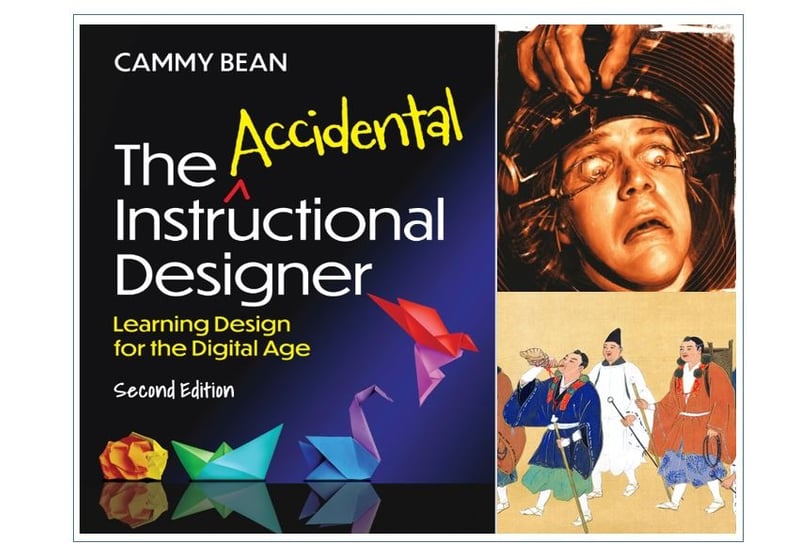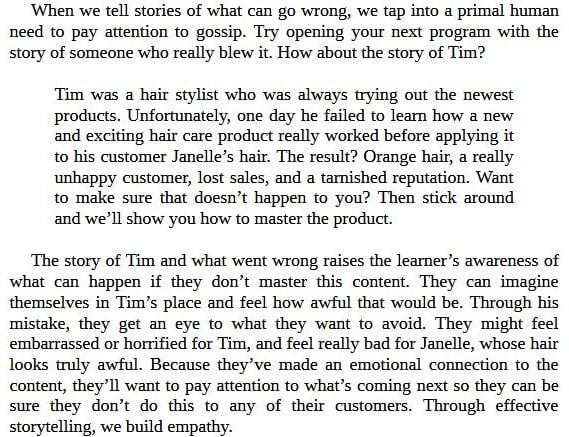CREATIVE LEARNING EXPERIENCES THAT CHANGE BEHAVIOR
Hook, Line & Learner
Oh yay, another snoozeworthy training / workshop / class...said no one. Ever. Here's what to do instead.
Lesley S
5/26/20253 min read


"Consider the beginnings of TV shows, books, articles, and the really effective learning programs you remember. What compelled you to stick around? What made you care and why?" - Cammy Bean, The Accidental Instructional Designer: Learning Design for the Digital Age (ATD Press, 2023)
To which I would add: workshops, trainings, sales calls, meetings & learning experiences that don’t bore you to death.
Instead, they get your attention. Hook you. The art of the hook is something effective teachers get good at. Generally because you get traumatized by the brutal feedback that bored participants enjoy sending your way in real time when...
...their eyes glaze over. Cross, even.
...they start fidgeting and fussing. REALLY DRAMATICALLY.
...they stare longingly out the window 'cuz they don’t have any devices since you banned ‘em in class like yours truly (cruel and unusual, I know).
Entertainment and video games, however, know to make people curious about what happens next. Get the blood pumping. Both. Which is why precisely none start off with: In this episode / book / article / learning program, you will learn the following list of bullet-pointed verbiage...


"Avoid the blah-blah-blah and help people see why these programs matter,” advises Cammy, who prefers telling the tale of Tim. Or some variant thereof.
You could...
write a short scene showing the bad things that could happen to the participant if they don’t learn the content – and the benefits if they do.
immerse the learner in a game quiz. It shows them right away what they don’t know – and what they’ll be able to do by the end of the course.
make the learner try completing a task and (hopefully) fail. That way, they’ll know what they don't know and what's they'll be able to complete successfully when they finish your learning experience.
Putting someone’s imagination to work from the get-go attracts their attention. “If you attract someone’s attention, they’re going to want to stick around to see what you have to say,” notes Cammy. “Their curiosity is piqued, their radars are up, and they want to know what’s going to happen next.” The what-happens-next factor gives you some runway to tap into people’s motivation. And motivation is what gets people to stay until the end...willingly.
Video games are especially good at the motivation piece, which is why I steal - shamelessly - from their playbook. (Note: all em dashes are 100% my own...just like the rest of this article.) This secret motivation sauce only has three ingredients:
COMPETENCE: Include as many ways as possible to make participants feel like they are becoming more competent at the material.
AUTONOMY: Provide learners opportunities to make choices, and also see the results of the choices they made; this element of autonomy is why I’ve always thought people are so obsessed with collecting stuff in video games.
RELATEDNESS: Make learners feel like they are part of a special social hierarchy or tribe. Although "relatedness" is usually used interchangeably with "social interaction," it can also be about knowing exactly where you fit inside a larger social structure. For example, Japanese religious mountain hermits, Yamabushi, remove themselves from everyday life, but they have recognized place within society. So much so, they even wear a signature uniform of hemp robes adorned with the Buddhist Heart sutra, straw sandals, conch shells and metal staves.
The tl;dr: Providing a hook and using motivation to sink it in deep is the key to getting and keeping learners’ attention. And actually meeting your learning objectives. Adds Cammy: "When you attract and sustain someone’s attention, you get very different results than when you force them to sit in front of a screen with their eyes peeled open A Clockwork Orange–style."